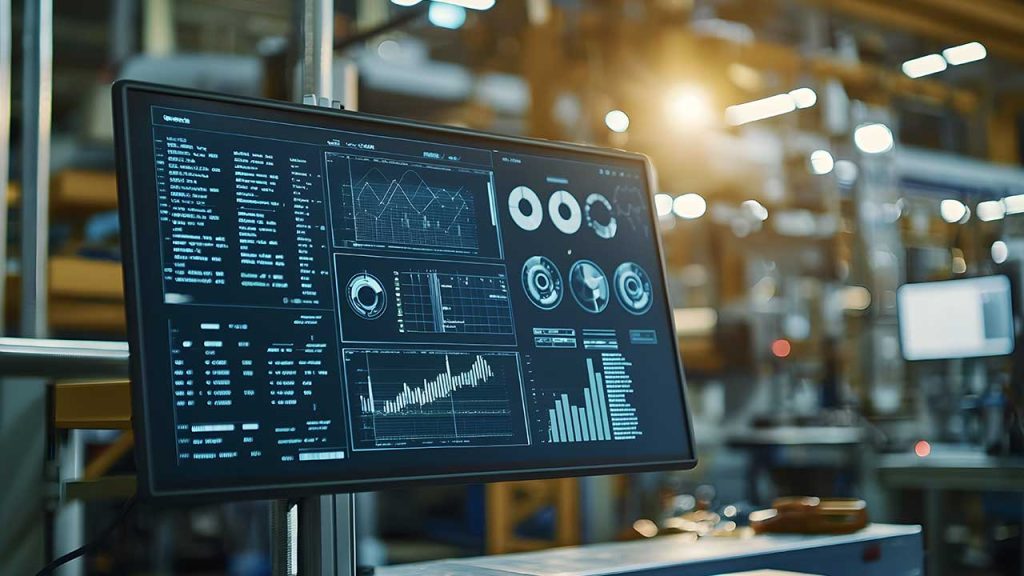From Data to Insights: Turning Industrial Data into Actionable Intelligence | SPONSORED
Modern industrial operations are redefining their relationship with data. No longer just a historical record, data now shapes real-time decisions and future outcomes. Systems across the factory floor continuously collect temperature, vibration, and motor speed readings through PLCs, IoT devices, and SCADA platforms.
But collecting data isn’t enough. The value lies in making it actionable—surfacing insights teams can use immediately to prevent downtime and improve performance. According to a study by ABB, unplanned downtime costs $125k/hour in the energy and manufacturing sectors, with 21% of survey respondents relying on run-to-fail maintenance. Making the leap from passive monitoring to proactive action starts with the right technology, and time series analysis is at the heart of that transformation.
Common Challenges in Extracting Value from Industrial Data
Overwhelming Volume and Complexity of Data
Modern operations generate huge volumes of data every second, from sensors, machines, and controllers that constantly track equipment conditions. Imagine a wind farm generating millions of data points per minute from dozens of turbines. Traditional databases struggle to keep up with this volume and frequency. When teams can’t capture and analyze this data in real time, they miss early signs of inefficiency, like subtle drops in turbine performance or missed chances to adjust blade angles as wind patterns shift. This leads to wasted energy, lower output, and lost opportunities to improve operations.
Lack of Real-Time Visibility and Slow Decision-Making
Let’s say a plant operator wants to improve uptime by using real-time monitoring to catch issues before they lead to downtime. They install IoT sensors to track vibration and temperature across their equipment. The sensors work but the data flows into a legacy database built for batch processing. The system only exports data in scheduled intervals using outdated formats which were designed for periodic reports, not real-time analysis. As a result, the operator can’t act fast when conditions change. There’s no way to send that data to modern analytics tools or AI models. So even though the data exists, it’s stuck, resulting in more downtime, higher maintenance costs, and missed opportunities to prevent breakdowns or improve efficiency.
Siloed and Inaccessible Data
Manufacturing environments rely on SCADA systems, PLCs, and IoT devices to monitor equipment, track output, and ensure safety. While each system generates valuable data, they often use different formats, protocols, or structures. This lack of standardization creates silos and makes it difficult to combine data sources for a complete view of operations. When systems don’t speak the same language, teams are left with information gaps, leading to extended downtime, missed opportunities for optimization, and increased operational costs.
Inconsistent Data Quality and Integrity
Machines, sensors, and software often produce data in formats like JSON, CSV or XML. Without a consistent structure, merging this information takes time and effort. Teams must clean, transform, and align the data before they can even begin analyzing it. When timestamps are misaligned or key values are missing, trend analysis breaks down. Teams can’t see how conditions are changing or predict what might happen next. That leads to delays, guesswork, and missed chances to prevent problems or optimize performance.
Limited Predictive Capability
Without access to real-time and historical data, it’s tough to build accurate forecasts. Teams struggle to spot gradual wear on equipment or anticipate failures before they happen. For example, if vibration data doesn’t correlate continuously with maintenance history, operators may miss early signs of bearing wear, resulting in unexpected downtime and costly repairs. In a real-life use case, Seadrill has saved over $1.6M last year alone by leveraging InfluxDB as their time series database.
What is Time Series Analysis?
Time series analysis organizes continuous, time-stamped data to reveal trends and patterns as they happen. Time Series Databases are built to collect, store, and manage historical data from industrial operations. They provide the time-stamped records needed to support time series analysis, enabling teams to track long-term trends and power smarter forecasting. With access to this historical context, teams can track trends, compare real-time performance to past baselines, and train forecasting models that drive smarter operations.
By aligning and analyzing this data chronologically, teams can detect subtle patterns, identify anomalies, and anticipate future performance. Instead of relying on static reports or periodic snapshots, time series analysis supports real-time monitoring and long-range forecasting, helping teams to respond faster, and shift from reactive to proactive operations.
How Time Series Analysis Enables Actionable Intelligence
Time series analysis addresses the biggest barriers to industrial optimization: slow decisions, fragmented data, and reactive maintenance. Processing high-frequency data as it’s generated gives teams immediate insight into what’s happening on the ground. With real-time visibility, they can spot issues early, respond quickly, and prevent problems before they become costly failures.
Organizing data in a consistent, time-stamped structure also helps eliminate silos. Teams can bring together live sensor readings and historical performance records, making it easier to uncover patterns, diagnose problems, and build a complete picture across systems.
When the data is trusted—clean, complete, and consistently formatted—it becomes the foundation for predictive strategies. Over time, teams can move from reacting to issues to proactively preventing them, unlocking gains in reliability, efficiency, and cost savings.
Time series analysis helps manufacturers move beyond storing data to actually using it, whether they’re monitoring live conditions or planning ahead with forecasts.
Best Practices for Time Series Analysis in IIoT
Making the most of time series data starts with how it’s structured and shared. Open formats like Apache Arrow and Parquet bring consistency to inputs from PLCs, SCADA systems, and IoT sensors—streamlining diagnostics, trend analysis, and cross-system insights without manual translation.
This structured approach also powers digital twins: virtual models of equipment that reflect real-time performance. When fed time-stamped data, a digital twin helps teams test scenarios, simulate changes, and forecast outcomes without interrupting operations.
Standardized, query-friendly formats reduce data cleanup and eliminate duplication or gaps. Teams get fast, reliable access to the insights they need, freeing them to focus on uptime, output, and continuous improvement.
Arrow Flight accelerates this process by moving data quickly between systems. High-frequency streams support live dashboards, alerts, and automated responses like predictive maintenance. Teams can act in real-time and stop issues before they become big problems.
How InfluxDB 3 Powers Time Series Analysis
InfluxDB 3 is a time series database engineered to manage high-cardinality, high-frequency, time-stamped data from industrial machines, sensors, and control systems. It’s designed to keep pace with the scale and complexity of modern operations, providing the backbone for real-time insight and long-term analysis.
Real-Time Data Processing
Using Arrow Flight, InfluxDB 3 delivers low-latency data ingestion and streaming analytics. Fast-moving data keeps operations visible in real-time, enabling automated alerts, immediate adjustments, and quicker responses to changing conditions. For businesses, this means fewer delays, faster decisions, and greater operational resilience.
Scalable, High-Performance Storage
InfluxDB 3 leverages Apache Parquet, a columnar storage format that compresses data and accelerates queries. This allows teams to store years of historical sensor data and access it quickly for trend analysis and forecasting. With fast, scalable access to long-term insights, teams can improve maintenance planning, optimize asset performance, and make smarter, data-backed decisions that reduce risk and increase ROI.
Interoperability with Other Systems
Built on open data standards like Arrow and Parquet, InfluxDB 3 integrates seamlessly with cloud platforms, analytics tools, and AI/ML pipelines. This interoperability simplifies system architecture, avoids vendor lock-in, and allows manufacturers to scale their predictive capabilities without rebuilding their stack.
From real-time decisions to long-range optimization, InfluxDB 3 gives industrial teams the performance, flexibility, and future readiness they need to get the most from their data.
The Takeaway
Modern industrial environments are evolving to meet the demands of real-time decision-making, operational efficiency, and smarter data use. Time series analysis is key to that transformation.
InfluxDB 3 is designed to handle high-speed, time-stamped data, making it simple to turn raw inputs into real-time insights for monitoring systems and preventing downtime.
By putting time series data to work, businesses can reduce downtime, improve performance, and stay competitive in a market that demands fast, informed action.
Ready to get started? Contact the InfluxData team, browse our time series buying guide, or get started with a free download of InfluxDB 3.
Sponsored by InfluxData
Related articles:



